 An Icehouse Pyramid Game
An Icehouse Pyramid Game for two to ten players
by Geoff Hanna

You will also need about a square foot of table space per player, and two tokens - the President and Vice President - that are different from each other and small enough to fit entirely inside a small pyramid. Small ball bearings or dried beans work. Alternately, write the words “President” and “Vice President” or "P" and "VP on small slips of paper and fold them until they fit.
| One Missile Silo | |
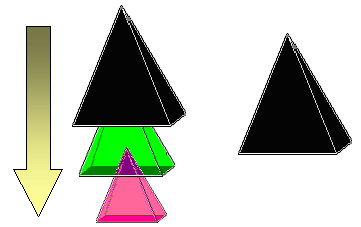 |
|
| Building the Silo | What the Enemy Sees |
Each player also secretly conceals their President and Vice President tokens under one or two of the Missile Silos.
Players take turns launching one Missile (removing one pyramid from one stack) at one specific exposed Missile in an enemy Battery. Both pyramids are discarded exposing whatever is underneath.
Eventually, the Silo protecting the President is exhausted and the President herself is exposed. Once exposed, the President can be struck by an enemy Missile, eliminating the owning player.
Play continues until only one President remains (one player winner) – OR – all remaining Presidents are exposed at the same time (a draw).

| Individual strategies will vary, and there is no “right” way to build your Silos. But there are some factors to consider: The opaque Missiles (Black and White) are less powerful than the others. But they conceal whatever may be underneath. Opaqueness is a powerful feature in and of itself. The “Rule of Four” limits you by the size of the pyramid. But there are three sizes: it is possible to have up to twelve Missiles of one color in your Battery. You could even construct a Battery that contained only two types of Missiles. |
Two-player games: Yellow and Red missiles are not used in two-player games; each Stockpile will contain only 96 pyramids.
Step 2: Construct your Missile Battery
Missiles come in ten colors: Black, White, Blue, Red, Green, Yellow, Purple, Orange and Clear (Yellow and Red are not used in two player games). Each color represents a different type of Missile with unique special abilities. See the Missiles section contains for the details of these abilities.
Each player creates eight Missile Silos. A Silo contains one large, one medium and one small pyramid. Stack the smaller pyramids inside of the larger ones so that only the outer pyramid is visible.
The colors in each Silo are up to you. They can be all the same, all different, or any combination in between. There is only one limit - the "Rule of Four": you may not have more than four pyramids that are the same color and the same size anywhere in your Missile Battery.
Step 3: Conceal your Executive Branch
Place each Executive token beneath a Missile Silo. It is perfectly legal to place them both within the same Silo – but risky!
Step 4: Determine who makes the First Strike
Once everyone is seated, take one unused pyramid and toss it into the air so that it will land somewhere in the middle of all players. The pyramid is now pointing to the First Strike player. If the pyramid lands upright or does not clearly point to one player, re-toss.

The results of the launch will depend on the Missile you are launching and the Missile you are targeting. Missiles are explained in detail in the Missiles section. There is also a launch results table at the end of this rule set.
You may not target your own Battery.
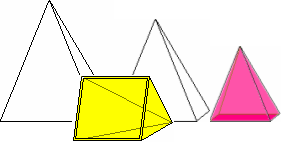
|
| The top Missile in the center Silo (medium White) has been damaged |
Damaged versus Destroyed
The attacking Missile is always destroyed. But the defending Missile is sometimes damaged instead of being destroyed. To indicate damage, place the attacking Missile on its side, in front of the damaged Missile and pointing towards it.
If a Missile is damaged and then receives another “damage” launch result, it is instead destroyed.
Damage to a Missile does not prevent it from launching, and there is no effect on the damaged Missile's special abilities.
Launching a Drone
If the defending target Missile is also an RPV Drone, both pyramids are destroyed and removed from play. Otherwise only the attacking pyramid is destroyed; the defender loses nothing but is instead required to give the attacker a hint about the location of one Executive token by stating his current “DEFCON” level.
Countering a Drone
If a defending Executive token is covered by its own RPV Drone then the token cannot be probed. For instance, in the example Battery below, a token under Silo 5 cannot be probed; the middle-sized pyramid in the stack is a clear RPV Drone.

DEFCON Level
Silos that have been completely exhausted still exist, they are just empty.
Consider the sample Battery above (remembering that only the top Missile in each Silo is actually visible). If an Executive token was under Silo 2 and the RPV Drone target was Silo 5, the DEFCON level would be six: the attacker “missed” by three Silos, plus there are three Missiles left in Silo 2.
If the token was instead under Silo 1, the DEFCON level would be only five: the attacker missed by four Silos, but there is only one missile remaining in Silo 1.
One more example: If the target was Silo 5 and the token was under Silo 7, the DEFCON level would be five – empty Silo 6 still counts as a missed Silo!
Announcing the RPV Drone launch result
- If either of the defending Executive tokens calculate to DEFCON Five or less and are not protected by a defending RPV Drone, the defender must announce “I am at DEFCON X” where X is the calculated level
- If all defender tokens are at DEFCON Six or higher, or are protected by RPV Drones, the defender must announce “No Report”
- If both tokens calculate to DEFCON Five or less and are not protected by an RPV Drone, the defender may choose which of the two DEFCON levels to announce.
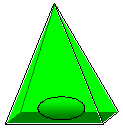
|
| This Executive token is visible because it is under a transparent pyramid: but it is not “exposed” |
Eventually, one of the Silos protecting an Executive token will lose all three Missiles. This causes the Executive token to be “exposed”.
Once exposed, tokens may be selected as targets. Any Missile, even Clear, will always destroy a token - tokens are never damaged. If the destroyed token is the President, the owning player is eliminated.
Notes: Destroying the Vice President has no effect. Orange missiles can not attack and therefore can't attack tokens either.
The Star Wars Missile Defense System
An exposed Executive token knows he is exposed! In a panic, he quickly activates the Star Wars Missile Defense System: until the end of the current attacker’s next turn, it is not possible to target this player in any attack, probe, deflection, or sortie. Missiles that do not target this player – specifically, Neutron Bombs aimed at a different player – continue to affect this player normally.
Exposing the Vice President activates the Defense System too. If the President is later exposed, the System activates again!
While protected, the exposed player may still launch Missiles during her turn normally (and in fact, must do so).
Special situations: If both Executive tokens were in the same Silo, the Defense System activates only once, and any one Missile hit will destroy them both. If the Defense System is already activated when another Executive token is exposed, the activation period restarts; the Defense System will remain active until the end of the current player’s next turn
It is also possible to end the game in a draw. If at any point, all of the surviving Presidents are exposed at the same time, regardless of when or how they became exposed, they collectively regain their sanity and declare peace; all remaining players tie for the win.

Unless context clearly indicates otherwise, the term "Launching a Missile" generally also includes probing with an RPV Drone or scrambling a SAC unit.
The "regular" attack is somewhat of a rarity: there are several kinds of Missiles and each does something different - some are not Missiles at all. But there are three rules that can be still be applied generally:
- No matter the color of the attacker, an SLBM (green pyramid) is always damaged instead of destroyed
- Any time a pyramid of one color attacks the same color, both are destroyed and there are no special effects (except green on green as described in [1])
- Any pyramid that may attack (including clear but not orange) may target an Executive token when the token is exposed and the defender's Star Wars Missile Defense System is not active

|
|
 |
Inter-Continental Ballistic Missile / ICBM (Black)
A direct descendant of the German V2 rocket (and generally speaking, created by the same people), the ICBM is the basic weapon of the nuclear age, delivering a significant payload across very long distances
|

|
|
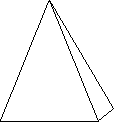 |
Peacekeeper Experimental ICBM/ MX (White)
The MX Missile would have deployed on train tracks and shuttled about in a fashion designed to confuse the enemy into attacking the wrong missile site. Shelved for several reasons including its inherent silliness.
|

|
|
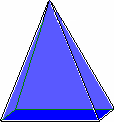 |
Multiple Independent Re-entry Vehicle / MIRV (Blue)
The MIRV is an ICBM that has been fitted with multiple warheads; the warheads separate from the missile while in space and may hit separate targets
|

|
|
 |
Submarine-Launched Ballistic Missile / SLBM (Green)
An ICBM placed on a submarine - very difficult to find, and even harder to destroy
|

|
|
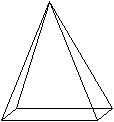 |
Remotely-Piloted Vehicle / RPV Drone (Clear)
The primary task of a Drone is surveillance and counter-surveillance, however light weapons such as anti-personnel missiles have been mounted to larger RPV units.
|

|
|
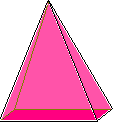 |
Enhanced Radiation Payload / Neutron Bomb (Red): Multi-Player Only
An ICBM equipped with a payload that de-emphasizes explosive potential and instead outputs as much radiation over as wide an area as possible
|

|
|
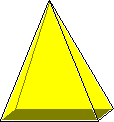 |
Space-Borne Anti-Missile System / SBAM (Yellow): Multi-Player Only
Shelved after the Cold War, these satellites would have attacked the guidance and flight systems of ballistic missiles while still in space but would not have been capable of actually destroying the missile. Hunter-killer versions would attack enemy SBAMS
|

|
|
 |
Advanced Attack Missile / Cruise Missile (Purple)
A combination of jet plane and missile, the Cruise Missile is not ballistic: it flies to the target hugging the Earth and bypassing any ballistic missile defenses
|

|
|
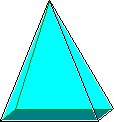 |
Strategic Air Command / SAC (Cyan)
Huge fleets of massive bombers - and the fighters that can take them down - were the original mainstay of the Cold War. Many remain in service even today
Air units are not launched: they are "scrambled". A scrambled unit is removed from its stack and added to the current player's Air Wing (placed upright in front of the player's Missile Battery).
Before the current player has launched a Missile (or scrambled another SAC unit), she may choose to sortie her Air Wing against one enemy player. This does not count as the current player's turn: she will still have to launch or scramble when the sortie has been resolved. It is not possible to scramble a unit and also sortie it in the same turn. The sortie may include some or all of the player's Air Wing. The attacking player announces the target player and then selects targets for each unit in the sortie. Indicate targeting by aiming the SAC unit at the targeted Silo. All targets must already be exposed - the attacker may not target one Silo multiple times. If the defending player also has SAC units scrambled, he may choose to intercept the sortie; each intercepting SAC unit destroys one attacking SAC unit of the defender's choice - and is then destroyed itself. The sortie concludes with any remaining sortie units resolving regular attacks against their pre-determined targets. |

|
|
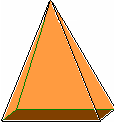 |
Anti Ballistic Missile / ABM (Orange)
Developed as a counter to the ICBM, hitting a missile with another missile has proven a particularly difficult task; current era ABMs have a suspect success record (and that is being generous)
|

Other than clear and cyan, the Missile colors tend to balance each other in pairs. Clear (RPV Probes) and cyan (SAC units) balance themselves. But you may want to avoid creating your own variants that use only color one out of a balanced pair:
- The two ICBMs (black and white)
- SBAMS or ABMS (yellow or orange) should always be accompanied by Cruise Missiles (purple)
- MIRVs and SLBMs (green and blue)
- There must be at least eight pyramids of each size for each player
- Players alternate selecting one pyramid from the pool
- Selection continues until everyone has 24 pyramids, eight of each size
A good minimum is somewhere around two tubes/stashes of pyramids per player, ideally each a different color.
As technology advanced the window retreated and detection became more difficult. ICBMs cut the window down to an hour, and that only if detected right away (spawning spy satellites in an attempt to detect launches more quickly). Later generations reduced it to 30 minutes, and then 19 minutes until eventually, submarine-launched missiles erased the window altogether.
The Launch Detect variant simulates this by adding a period of time between missile launch and missile strike. In this variant, a missile launched this round will not strike until next round.
- Sortie Phase: The player's Air Wing may sortie
- Missile Strike Phase: A missile launched the previous turn (if any) now resolves its attack
- Missile Launch Phase: Player launches a new missile or scrambles a SAC unit
- The player designates one enemy player as the target, but does not target a specific missile Silo
- Place the launched missile between the attacking and targeted player, on its side pointing towards the targeted player
- If the Star Wars Missile Defense System is activated, all missiles that have been launched at the activating player are destroyed. No one may target or deflect to this player while the Defense System is active
- Missiles that are "on the way" cannot be targeted by any player - including the owning player
- Deflected Missiles impact immediately, they do not go back into "on the way" state
Do not destroy things; melt away negative learned behaviors. Do not inflict damage, but you may encounter deep-seated emotional areas in your friend that require special attention.
- Black: You send a bouquet of flowers
- White: An unexpected hug
- Blue: A group intervention
- Green: An unresolved childhood issue
- Yellow: A cultural or gender bias that makes it harder to receive affection
- Orange: Emotional scars from previous relationships
- Clear: An open and honest conversation
- Purple: A new puppy. No one can resist a puppy!
- Red: The Love Bazooka – shower everyone else with soft and warm fuzzies

| Attacker | Defender
| |
 Black |
 White |
 Blue |
 Green |
 Clear |
 Red |
 Yellow |
 Purple |
 Orange |
 Cyan |
 Black Destroy |
Damage |
Destroy |
Damage |
Destroy |
Destroy |
Destroy + Deflected |
Destroy |
Destroy |
Destroy |
|
 White Damage |
Destroy |
Destroy |
Damage |
Destroy |
Destroy |
Destroy + Deflected |
Destroy |
Destroy |
Destroy |
|
 Blue Destroy + Extra Attack |
Destroy + Extra Attack |
Destroy |
Damage + Extra Attack |
Destroy |
Destroy |
Destroy + Deflected |
Destroy + Extra Attack |
Destroy + Extra Attack |
Destroy + Extra Attack |
|
 Green Destroy |
Destroy |
Destroy |
Damage |
Destroy |
Destroy |
Destroy + Deflected |
Destroy |
Destroy |
Destroy |
|
 Clear Probe |
Probe |
Probe |
Probe |
Destroy |
Probe |
Probe |
Probe |
Probe |
Probe |
|
 Red Destroy + Attack All |
Destroy + Attack All |
Destroy + Attack All |
Damage + Attack All |
Destroy + Attack All |
Destroy |
Destroy + Deflect All |
Destroy + Attack All |
Destroy + Attack All |
Destroy + Attack All |
|
 Yellow Damage |
Damage |
Damage |
Damage |
Damage |
Damage |
Destroy |
Damage |
Damage |
Damage |
|
 Purple Destroy |
Destroy |
Destroy |
Damage |
Destroy |
Destroy |
Destroy |
Destroy |
Destroy |
Destroy |
|
 Orange Does Not Attack |
|
 Cyan Destroy |
Destroy |
Destroy |
Damage |
Destroy |
Destroy |
Destroy |
Destroy |
Destroy |
Destroy |
| ||||||||||||||||||
|---|---|---|---|---|---|---|---|---|---|---|---|---|---|---|---|---|---|---|---|---|---|---|---|---|---|---|---|---|---|---|---|---|---|---|---|---|---|---|---|---|---|---|---|---|---|---|---|---|---|---|---|---|---|---|---|---|---|---|---|---|---|---|---|---|---|---|---|---|---|---|---|---|---|---|---|---|---|---|---|---|---|---|---|---|---|---|---|---|---|---|---|---|---|---|---|---|---|---|---|---|---|---|---|---|---|---|---|---|---|---|---|---|---|---|---|---|---|---|---|---|---|---|---|---|---|---|---|---|---|---|